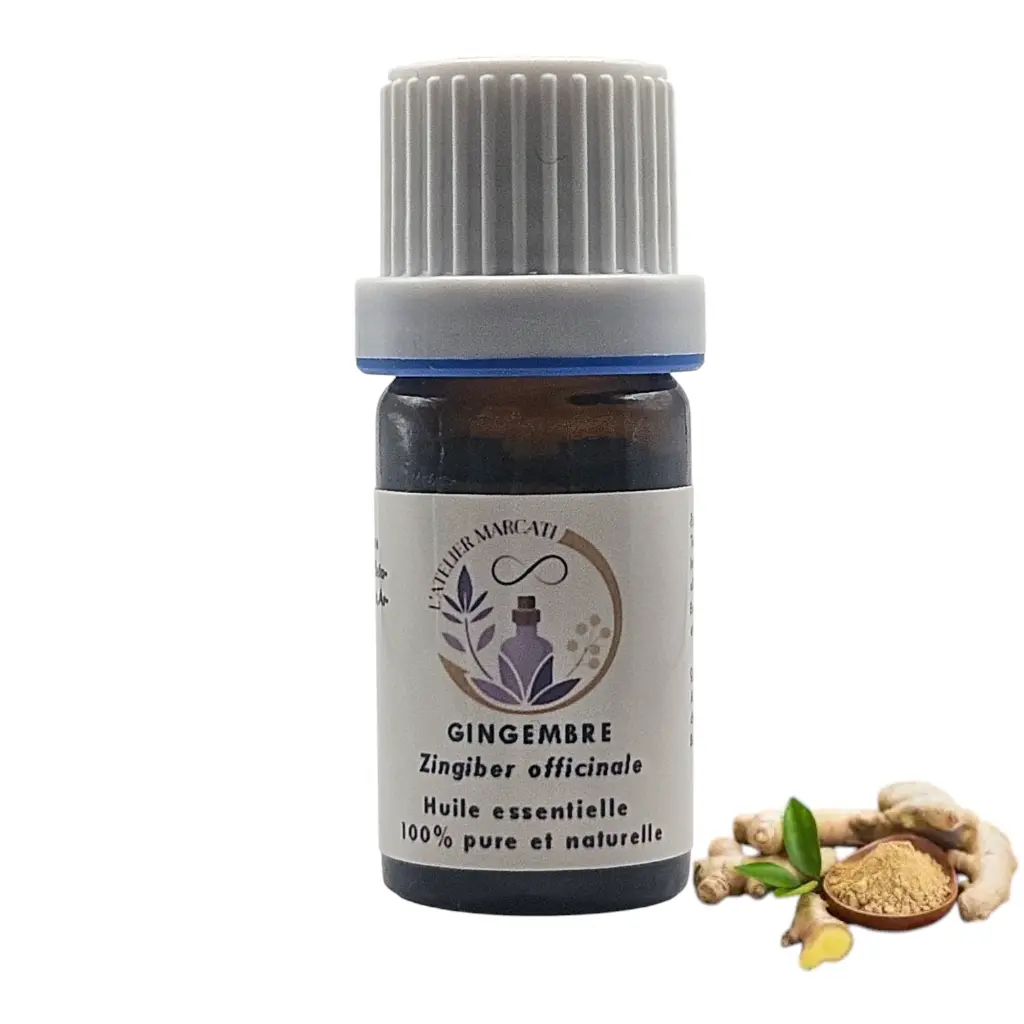Ginger essential oil
Botanical name: Zingiber offiinalis

Chemotype and indications
Identity card
Name: Ginger
Botanical name: Zingiber offiinalis
Distilled part: Rhizome
Botanical family: Zingiberaceae
Origin: France
Chemical composition:
- Aldehydes: Citronellal, Geranial, Myrteal, Neral, Phéllandral
- - Ketones: Cryptone, Hexanone
- - Hydrocarbons
- - Monoterpenes: Beta Phellandrene, Beta Pinene, Camphene (8%), Limonene, Myrcene, P Cymene
- - Monoterpenols: Linalool
- Sesquiterpenes: Beta Caryophyllene, Beta Curcumene, Beta Elemene, Bisabolene (7%), Copaene, Germacrene, Zingiberene (30%)
- - Sesquiterpenols: Cis Gamma Bisabolol
Physical properties and therapeutic indications
- Analgesic
- Muscle analgesic*
- Aphrodisiac*
- Aperitif*
- Bloating
- Chronic bronchitis*
- Carminatif*
- Catarrhe
- Colic
- Constipation*
- Diarrhea
- Muscle aches
- Dyspepsia*
- Expectorant
- Fatigue
- Febrifuge
- Flatulence*
- frigidity
- Flu
- Impotence*
- Motion sickness*
- Nausea*
- Neuralgia
- Toothache
- Rheumatism*
- Sinusitis
-
Digestive stimulant *
Emotional, psychological properties and therapeutic indications
- State of weakness
- Nervous overwork
- Self-confidence (Gives)
- Exhaustion
- Sentiments (Absence)
- Feelings (Hardening)
- Feelings (Coldness)
Additional information
Divers:
The Chinese consider that ginger root stimulates and activates the circulation of the body's vital energy, mainly in the digestive system.
Do not confuse with Asarum Canadense (Indian Ginger) which has no therapeutic benefit.
Legend: * powerful, ** very powerful; *** extremely powerful (power value for associated pathology)
Reference and bibliographic source: Lily BAYER and Dr Hervé STAUB, (2013) “In-depth treatise on Phyto and Aromatherapy”, Ed. Grancher. p. 530.
INDICATIONS IN AROMATHERAPY AND THE USE OF ESSENTIAL OILS DO NOT CONSTITUTE A MEDICAL DIAGNOSIS AND DO NOT REPLACE THE ADVICE OF A DOCTOR OR MEDICAL TREATMENTS



